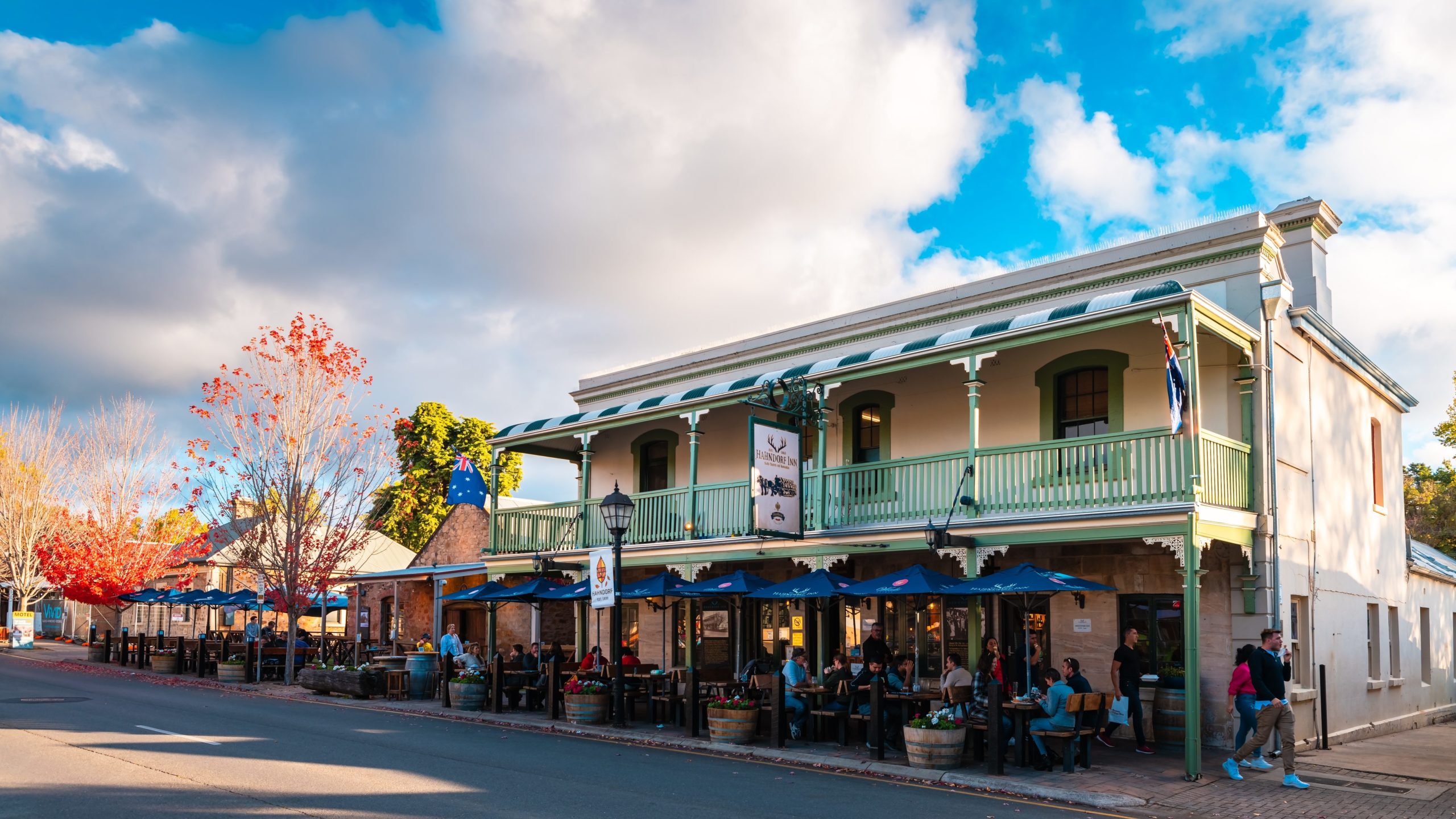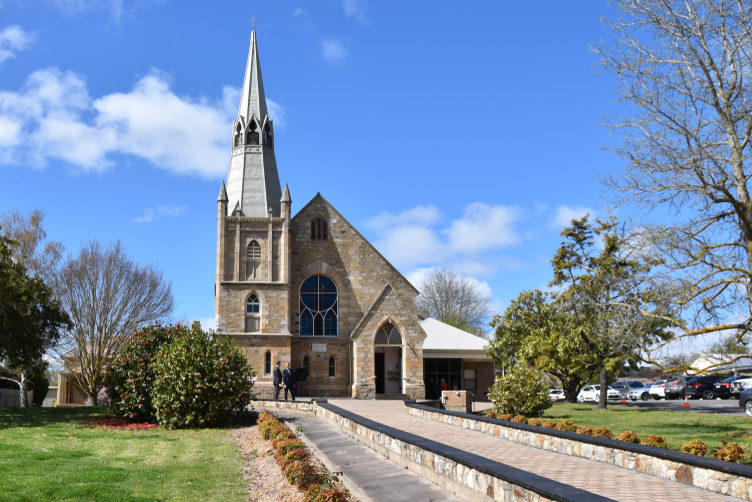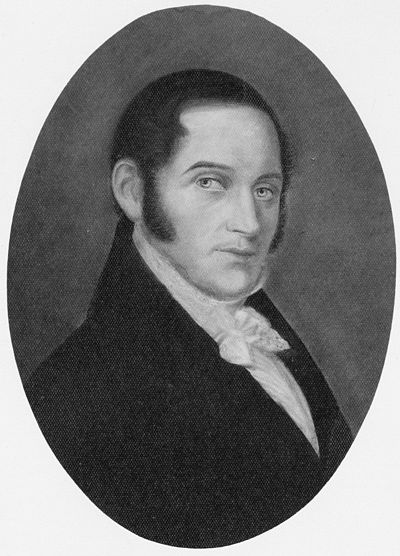A complete guide to Hahndorf, SA

There’s no place like Hahndorf, where you can drive through typically Australian countryside and suddenly enter a world that seems to have been lifted out of Central Europe.
Just 30 minutes from Adelaide’s CBD, in South Australia, it’s a pretty little piece of Germany on the southern edge of the Adelaide Hills. Part Prussian, German and Silesian in an Aussie landscape, it proudly, and accurately, declares itself as “Australia’s oldest surviving German town”.
Hahndorf offers visitors a distinctly European experience that includes bratwurst, kransky and bockwurst sausages, schnitzel, sauerkraut, steins of beer, window boxes with stunning floral displays, and Lutheran churches.
This charming town features shady, tree-lined streets and shop signs in Teutonic script. Before COVID restrictions, busloads of German tourists filled cafes, beer-halls and restaurants run by descendants of the town’s early German settlers.
It’s possible to lose track of time exploring the distinctive Fachwerk architecture, fascinating Silesian history or wonderland of craft and gift shops, many of which have won awards for the quality of their wares. Of particular interest is the Beerenberg Family Farm, where you can pick and purchase your own strawberries and buy jams, relishes and chutneys.
Hahndorf was zoned a State Heritage Area in 1988 and is now recognised as one of SA’s five top tourist destinations.

Location:
Hahndorf is 26km south-east of Adelaide on the southern edge of the Adelaide Hills. It’s 330m above sea level.
Origin of Name:
On 28 December 1838, the ship Zebra, under command of the Danish Captain Dirk Meinertz Hahn, reached Port Adelaide. It was carrying 187 immigrants from Silesia who named the town after the captain (Dorf is the German word for village).
Useful websites:
hahndorfsa.org.au
https://southaustralia.com/destinations/adelaide-hills/places/hahndorf
Places of interest
1. German Arms Hotel
Located at 69 Main Street, this popular historic hotel has a quaint mid-19th century appearance.
It was established on this site in 1865 by local publican Robert Hunt. There had been a previous hotel (across the road) as early as 1839 but it was burnt down.
For many years the German Arms was the Cobb & Co. staging point in the town.

2. Hans Heysen’s House and Studio
At one time just about every Australian home had a Hans Heysen image on the wall. Reproductions of his gum tree paintings with titles such as Droving into the Light or The Roadside Gum were hugely popular depictions of idyllic rural Australia.
Many of Heysen’s paintings portrayed the eucalypt stand on his 60ha property in the Hahndorf area. The Flinders and Mount Lofty ranges and other nearby regions also became favourite subjects.
There are guided tours of the studio, house and grounds. The house, known as The Cedars, is still owned by the family. It’s in pristine condition and Heysen’s art is displayed on its walls. The Cedars is open from 10am to 4.30pm Tuesday to Sunday.
3. The Old Mill Hotel
The address of this steam-powered flour mill is 98 Main Street. It was built in 1854 and operated continuously – crushing everything from wheat to bone for fertiliser – until its 1912 closure. In 1971 it became the Old Mill Restaurant and is now the Hahndorf Old Mill Hotel. Its vines and historic exterior make it an important part of Hahndorf’s charm.

4. St Michael’s Lutheran Church
One of Hahndorf’s two Lutheran churches St Michaels, is on the corner of Balhannah Road and Church Street.
Established in 1839, it’s the oldest Lutheran congregation in Australia.
The current church building was dedicated on 3 July 1859. The original church, which was built of pug – a type of clay fashioned into bricks – and consecrated in 1840, also operated on this site.

5. Beerenberg Family Farm
This property on Mount Barker Road is part of the historic Paech farming settlement, established in this area as early as 1839. The sixth generation of the Paech family now runs the farm.
From November to April you can pick and purchase your own strawberries. But jams, chutneys and
relishes made from the farm’s produce are available here year-round.

History
Before Europeans settled in the Adelaide Hills, the area had been home to the Peramangk First Nations people for more than 20,000 years.
On 28 December 1838 the ship Zebra, captained by Dirk Meinertz Hahn (right) and carrying 187 German immigrants, reached South Australia. Hahn rented 60ha of land (the present site of Hahndorf), which was subsequently divided. A small group of men and women from the Zebra travelled to inspect the site and settled there.
By 1839 the settlers had contributed to the construction of a church that stood where
St Michael’s Lutheran Church now stands.
In 1846 St Paul’s Lutheran Church was consecrated.
By the 1850s vineyards were established, the women worked as shepherds and the men hired themselves out to surrounding farms. The first substantial houses were built at this time.
The painter Hans Heysen settled at The Cedars in 1912.
The town experienced intense anti-German sentiment during World War I, and its name was changed to Ambleside by a 1917 Act of Parliament.
In 1917 the German Arms Hotel became the Ambleside Hotel. It did not change its name back until 1976.
In 1935 the Nomenclature Act allowed the town to return to the name of Hahndorf.





